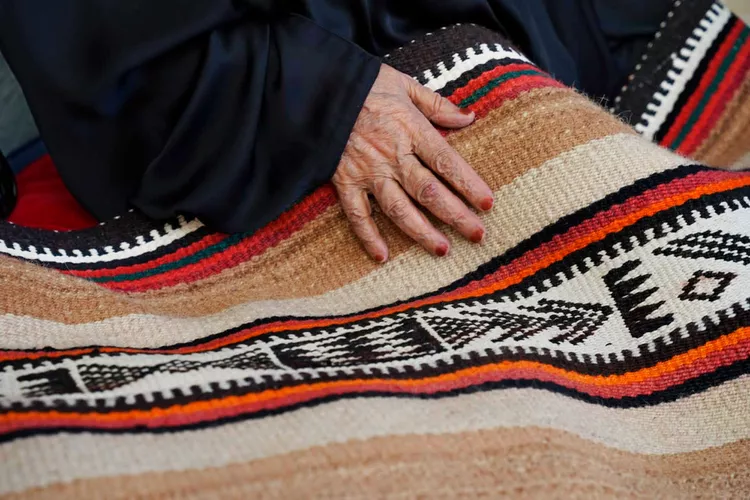Summary of Sadu Weaving in Kuwait
- Preservation of Tradition: Sadu weaving, a centuries-old Bedouin craft, is being preserved through the efforts of dedicated individuals and organizations.
- Cultural Significance: The art form is woven into the history and identity of Kuwait, highlighting its beauty, functionality, and social relevance.
- Modern Interpretations: While the traditional craft faces challenges, it continues to adapt and thrive through innovative designs and community involvement.
In Kuwait City, one group is preserving a centuries-old artistic tradition and reimagining it for the future.
There are very few master practitioners of sadu, a traditional Bedouin weaving method, left in Kuwait. However, the number might be even lower were it not for Sheikha Altaf al-Sabah.
The anthropologist and textile scholar has been promoting this ancestral art form for decades. She is cofounder of the Al Sadu Project, which since 1984 has been headquartered at Sadu House — a classic Kuwaiti-style home where visitors can learn the history of sadu through exhibitions, weaving workshops, and artists’ residencies. Al-Sabah is also the head of Al Sadu Weaving Cooperative Society, which counts 70 weavers among its active members. Thanks in part to these efforts, the Kuwaiti craft was added to UNESCO’s Intangible Cultural Heritage of Humanity list in 2020.

Traditionally, sadu was passed down through generations, from mothers to daughters, via informal gatherings. Women created a vibrant atmosphere, reciting poetry, singing, and sharing the day’s news as they worked on their weaving. This social practice not only strengthened bonds but also transmitted cultural knowledge. Their creations, such as rugs and cushions, were designed to enhance the beauty and functionality of the black Bedouin tent, notably with the ibjad, a woven divider to separate the women’s and men’s areas. Moreover, elaborate geometric designs are crafted using sheep’s wool and camel and goat hair dyed with spices and local plants like henna. Each color conveys a distinct message: red symbolizes strength, while orange represents the desert sun.
Growing up in Kuwait, I witnessed Sadu House evolve into the cultural-heritage destination it is today — highlighted by its successful initiative to include sadu in the national school curriculum. On a recent visit, I observed a workshop where weavers showcased their skills. Two Bedouin women clad in burkas sat at the end of the open courtyard, surrounded by vibrant weavings.

While both weavers expressed a desire to pass down the craft to future generations, their approaches contrasted significantly: the elder, Um Mohammad, was inspired by visual memories of sadu from her childhood over 70 years ago, whereas Mutaira, in her fifties, enjoys experimenting with modern designs and unconventional colors.
Although the traditional Bedouin lifestyle that birthed this craft is diminishing, it remains alive through the handwoven products created by cooperative members, which can be found at the museum or through the online shop. Both Mutaira and Um Mohammad believe that sadu will not disappear, but rather evolve — shaped by modern interpretations while remaining deeply inspired by the ever-present desert surroundings.
A version of this story first appeared in the April 2023 issue of GoTravelDaily under the headline “Holding Patterns.”





